- Home
- Rick Mofina
Vengeance Road Page 2
Vengeance Road Read online
Page 2
“We’re supporting out there.”
Supporting? He had something.
“What’s going on?”
“That’s all I know. Did you try ECSO?” said the woman who answered for Ascension Park.
A deputy with the Erie County Sheriff’s Office said, “Yeah, we’ve got people there, but the SP is your best bet.”
He called the New York State Police at Clarence Barracks. Trooper Felton answered but put him on hold, thrusting Gannon into Bruce Springsteen’s “The River.”
Listening to the song, Gannon considered the faded news clippings pinned to low walls around his desk, his best stories, and the dream he’d pretty much buried.
He never made it to New York City.
Here he was, still working in Buffalo.
The line clicked, cutting Springsteen off.
“Sorry,” Felton said, “you’re calling from the Sentinel about Ellicott Creek?”
“Yes. What do you have going on out there?”
“We’re investigating the discovery of a body.”
“Do you have a homicide?”
“Too soon to say.”
“Is it a male or female? Do you have an ID, or an age?”
“Cool your jets there. You’re the first to call. Our homicide guys are there, but that’s routine. I got nothing more to release yet.”
“Who made the find?”
“Buddy, I’ve got to go.”
A body in Ellicott. That was a nice area.
He had to check it out.
He tucked his notebook into the rear pocket of his jeans and grabbed his jacket, glancing at the senior editors in the morning story meeting in the glass-walled room at the far west side.
Likely discussing pensions, rather than stories.
“Jeff, tell the desk I’m heading to Ellicott Creek.” He tore a page from his notebook with the location mapped out. “Get a shooter rolling to this spot. We may have a homicide.”
And I may have a story.
3
Gannon hurried to the Sentinel’s parking lot and his car, a used Pontiac Vibe, with a chipped windshield and a dented rear fender.
The paper was downtown near Scott and Washington, not far from the arena where the Sabres played. The fastest way to the scene was the Niagara leg of the New York State Thruway to 90 north.
Wheeling out, with Springsteen in his head, Gannon questioned where he was going with his life. He was thirty-four, single and had spent the last ten years at the Buffalo Sentinel.
He looked out at the city, his city.
And there was no escaping it.
Ever since he was a kid, all he wanted to be was a reporter, a reporter in New York City. And it almost happened a while back after he broke a huge story behind a jetliner’s crash into Lake Erie.
It earned him a Pulitzer nomination and job offers in Manhattan.
But he didn’t win the prize and the offers evaporated.
Now it looked like he’d never get to New York. Maybe this reporter thing wasn’t meant to be? Maybe he should do something else?
No way.
Being a reporter was written in his DNA.
One more year.
He remembered the ultimatum he’d given himself at the funeral.
One more year to land a reporting job in New York City.
Or what?
He didn’t know, because this stupid dream was all he had. His mother was dead. His father was dead. His sister was—well, she was gone. His ultimatum kept him going. The ultimatum he’d given himself after they’d lowered his parents’ caskets into the ground eleven months ago.
Time was running out.
Who knows? Maybe the story he needed was right here, he told himself while navigating his way closer to the scene, near Ellicott Creek.
It was on the fringes of a lush park.
Flashing emergency lights splashed the trees in blood red as he pulled up to a knot of police vehicles.
Uniformed officers were clustered at the tape. Gannon saw nothing beyond them but dense forest, as a stone-faced officer eyed his ID tag then assessed him.
“It’s way in there. There’s no chance you media maggots are getting any pictures of anything today.”
The others snickered.
Gannon shrugged it off. He’d been to more homicides than this asshole. Besides, guys like that never deterred him. If anything, he thought, tapping his notebook to his thigh, they made him better.
All right, pal, if there’s a story here, I’m going to find it.
After some thirty minutes of watching detectives in suits, and forensics people in overalls, walk in and out of the forest, Gannon was able to buttonhole a state police investigator with a clipboard heading to his unmarked sedan.
“Hey, Jack Gannon from the Buffalo Sentinel. Are you the lead?”
“No, just helping out.”
“What do you have?”
Gannon stole a glimpse of the data on his clipboard. Looked like statements.
“We’re going to put out a release later,” the investigator said.
“Can you give me a little information now?”
“We don’t have much, just basics.”
“I’ll take anything.”
“A couple of walkers discovered a female body this morning.”
“Is it a homicide?”
“Looks that way.”
“What age and race is the victim?” Gannon asked.
“I’d put her in her twenties. White or Native American. Not sure.”
“Got an ID?”
“Not confirmed. We need an autopsy for that.”
“Can I talk to the walkers?”
“No, they went home. It was a disturbing scene.”
“Disturbing? How?”
“I can’t say any more. Look, I’m not the lead.”
“Can I get your name, or card?”
“No, no, I don’t want to be quoted.”
That was all Gannon could get and he phoned it in for the Web edition, putting “disturbing scene” in his lead. In the time that followed, more news teams arrived and Lee Watson, a Sentinel news photographer, called Gannon’s cell phone sounding distant against a drone.
“What’s up, are you in a blender, Lee?” Gannon asked.
“I’m in a rented Cessna. The paper wants an aerial shot of the scene.”
Gannon looked up at the small plane.
“Watch for Brandy Somebody looking for you,” Watson said. “She’s the freelancer they’re sending to shoot the ground. Point out anything for her.”
When Brandy McCoy, a gum-snapping freelancer, arrived, the first thing Gannon did was lead her from the press pack and cops at the tape to the unmarked car belonging to the investigator he’d talked to earlier.
The detective had gone back into the woods. His car was empty, except for his clipboard on the passenger seat. Gannon checked to ensure no one could see what he and the photographer were doing.
“Zoom in and shoot the pages on the clipboard. I need the information.”
“Sure.”
Brandy’s jaw worked hard on bubble gum as she shot a few frames then showed Gannon.
“Good,” he said, jotting information down and leaving. “My car’s over here, come on.”
Twenty minutes later, Gannon and Brandy were walking to the front door of the upscale colonial house of Helen Dodd. She was a real estate broker, and her friend, Kim Landon, owned an art gallery in Williamsville, according to the information Gannon had gleaned from the police statements.
Gannon thought having Brandy accompany him would help. Barely out of her teens, she was nonthreatening, especially with that sunny gum-chewing smile.
As they reached the door, it opened to two women hugging goodbye.
“Excuse us,” he said. “I’m Jack Gannon, and this is Brandy McCoy. We’re with the Buffalo Sentinel. We’re looking for Helen Dodd and Kim Landon?”
Surprised, the two women looked at each other.
“Would t
hat be you?”
Kim nodded. Helen was uneasy. Both women looked as though they had been crying. Gannon didn’t want to lose them.
“Can we talk to you a bit about this morning?” he asked.
“How did you get this address?” Helen Dodd wanted to know.
Gannon said, “Well, we just came from the park, talked to police sources and stuff. We understand you found the woman.”
Awkward silence followed until Brandy punctuated it with a prompt.
“It must’ve been terrible.”
Kim resumed nodding.
“It was horrible,” Kim said.
“May I take notes?” Gannon asked.
“I don’t know.” Helen eyed their press tags. “You’re going to put this in the Sentinel?”
“Yes, for the story we’re doing,” Gannon said.
“For as long as I live, I’ll never forget it,” Kim started. “At first we thought it was a joke. When you see something like this, it makes you appreciate what’s important. It was just so horrible. I mean, neighbourhood kids play in that park.”
“I hope they catch the monster who did it,” Helen said. “I’m calling my home-security company to make sure they keep an eye on my house.”
“Can you walk us through how you found her?” Gannon asked.
“We take a regular morning walk in that area and spotted it. Her,” Kim said. “At first she looked like a mannequin, entangled in shrubs and small trees. We didn’t get too close once we realized what it was.”
“Can you tell me exactly what you saw?” Gannon asked.
“We’d heard stories about what happens in there at night, which I never believed until now. We saw condoms and hypodermic needles,” Kim said.
“She was in a shallow grave,” Helen said. “We saw dark hair, an arm bent over a head in a swimmer’s posture, like she was breaking the surface of the earth.”
After they finished, Gannon dropped Brandy off at the scene to keep vigil until they removed the body.
He had to get back to the newsroom.
This was shaping up to be a grisly homicide, he thought, settling in at his desk. While eating a club sandwich from the cafeteria, he checked regional and state missing-person cases posted online, using the detective’s description of a white or Native American woman in her twenties as his guide.
So many of them fit the general description, he thought, wondering if there was any chance this was linked to that tip he wanted to chase about a missing woman from Vermont or Connecticut. He stared into their faces, reading their information.
Was he staring at the unidentified victim near Ellicott Creek? Who was she? And how did her life come to an end there? She was someone’s daughter, maybe someone’s wife or sister?
He was pierced by a memory of his sister, Cora.
And what became of her life?
He couldn’t dwell on that now and forced himself back to his story.
“Do we have any idea who she is?” Tim Derrick, the assignment editor, had a habit of sneaking up behind reporters and reading over their shoulders.
“Not yet.”
Gannon clicked onto the latest news release from the investigators. He touched his pen to the words “unidentified female, in her twenties.”
“She was sort of half buried in a shallow grave,” Gannon said.
“Cripes,” Derrick said. “Well, we’ve got strong art from the air and the walkers. Front will take your story. Give us about twenty-five inches or so. Make sure the Web people get it.”
“Sure.”
Derrick patted Gannon’s shoulder.
“And nice work.”
“Hey, Tim. Anything more to the rumors going around about more cuts?”
Derrick stuck out his bottom lip, shook his head.
“The way things are in this business, those rumors never go away.”
A few hours later, as Gannon was giving his story a final read through, polishing here and there, his line rang.
“Hi, Jack, it’s Brandy.”
“How you doing there?”
“The medical examiner just moved the body. I got some good shots and sent them in to the photo desk.”
“Thanks, I’ll have a look.”
After he’d finished his story Gannon joined the night editor at the photo desk where he was reviewing the news pictures with Paul Benning, the night photo editor.
“It’s all strong.” Benning clicked through the best frames as he worked on finishing a milk shake.
Here was the sharp overview showing a brilliant yellow tarp isolated like a flag of alarm amid an all-consuming forest, Gannon thought.
Here was the medical examiner’s team, grim-faced with a black body bag strapped to a stretcher, loading it into a van.
Here were Helen Dodd and Kim Landon, tight head shots, shock etched in their faces. Here was Kim, looking off, eyes filled with worry.
“Go back to the aerial,” Gannon said.
Benning sucked the remnants of his shake through a plastic straw.
“You see something?
“Maybe. Can you blow it up?”
Benning enlarged it.
Click after click drew them closer to the tarp and a fleck of white near the left edge. Click after click and the fleck grew, coming into focus as a hand.
The woman’s hand, reaching from the tarp.
Reaching from her grave, as if seizing him in a death plea to tell the world who did this.
Before they did it again.
4
Some thirty-six hours after it had been removed from its shallow grave, the body was autopsied at the Erie County Medical Center, on Grider Street off the Martin Luther King Expressway.
Death was classified a homicide.
Using fingerprints and dental records, the dead woman’s identity was confirmed as being Bernice Tina Hogan, aged twenty-three, of Buffalo, New York. The facts of her death were summarized in a few sentences in a police news release.
Nothing about the pain of her life, Gannon thought as he worked on a long feature about her. After her name had been released, some of her former classmates had contacted him at the paper.
“Bernice had a hard life,” one friend told him.
Bernice never knew her real parents. She’d been told she had some Native American blood, maybe Seneca, and had been raised, for a time, on a reservation. Maybe Allegany, or Cattaraugus. She wasn’t sure. Bernice had never been sure about much in her short life, her friends told him.
Some sent him photos.
She stood stiff and shy in obvious embarrassment; a heavyset girl with low self-esteem who’d been abused by her foster father, who also beat her foster mother.
At first she’d overcome it all. Bernice did well in school, going on to study nursing at Buffalo State, nearly graduating before she was drugged and raped at a party.
“After that happened she was so brokenhearted. It was like she just gave up. She began missing classes,” one friend said.
Bernice had grown addicted to crack. Few people knew that she’d slipped into prostitution as she descended down a path that ended in a makeshift grave under a thicket of twisted maple near Ellicott Creek.
Gannon wanted to talk to Bernice’s family, but no one knew who her foster mom was, or where she lived. So he made a lot of calls over the next few days until he got a lead.
“You didn’t get this from me, but her name is Catherine Field,” a source at the city’s Social Services and Housing Department told him.
Catherine Field was a widowed fifty-nine-year-old diabetic who lived alone on welfare in an older section of the city west of Main. Gannon had gone to the address several times but in vain.
No one was home.
But he refused to give up trying to find her.
Maybe today would be different, he thought as once again he rolled by the home where Catherine had raised Bernice. It was a small two-story frame house built with the optimism that had blossomed when the Second World War ended. Now, with its blist
ering paint, missing shingles and sagging front porch, it looked more like a tomb for hope.
It sat among the boarded-up houses near a vacant lot where several old men leaned against an eviscerated Pinto and passed around a bottle wrapped in a paper bag.
Memories of his sister rushed at him before he turned his attention back to the story and the house, eyeing it intensely as he drove by. His hopes lifted when he saw a woman in the backyard.
This time he parked out of sight down the block and approached the house from a different street, coming to the back first, where he saw a woman in her fifties, tending a flower garden near the rickety back porch.
“Catherine Field?”
She turned to him, the toll of a hard life evident in the lines that had woven despair on her face. Her red-rimmed eyes stared helplessly at him.
“You are Catherine Field, Bernice Hogan’s foster mom?”
“Who are you?”
“Sorry,” Gannon fished for his photo ID. “Jack Gannon, a reporter for the Buffalo Sentinel.”
As if cued, breezes curled pages of the News and the Sentinel that were on a small table between two chairs. Also on the table: a glass and a bottle of whiskey that was half-empty.
“I’ve been trying to reach you,” he said.
“I was burying my daughter.”
“I’m sorry. My condolences. There was no notice of the arrangements.”
“We wanted to keep it private. My brother had a plot, a small cemetery on a hill overlooking an apple orchard.”
“Where is it?”
“I don’t want to say.”
“I understand. May I talk to you about Bernice?”
“You can try, I’m not in good shape.”
She invited him to sit on the porch. Gannon declined a drink. Catherine poured one for herself, looked at her small garden and spoke softly. She told him that Bernice’s mother was a child, fourteen years old, when she gave her up for adoption.
But Bernice was never adopted. Instead, she was bounced through the system. Catherine and her husband, Raife, a carpenter, became Bernice’s foster parents when Bernice was eleven. By then Bernice was aware that she’d been given up for adoption.
“I loved her and always felt like her mom, but she chose to call me Catherine, never Mom. I think it was her way of emotionally protecting herself because she’d had so many ‘moms.’ No one could ever really be her mother.”

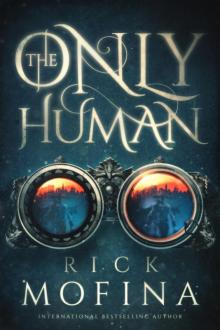 The Only Human
The Only Human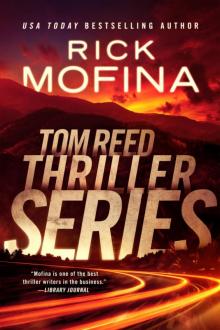 Tom Reed Thriller Series
Tom Reed Thriller Series![[Tom Reed and Walt Sydowski 04.0] No Way Back Read online](http://i1.bookreadfree.com/05/tom_reed_and_walt_sydowski_04_0_no_way_back_preview.jpg) [Tom Reed and Walt Sydowski 04.0] No Way Back
[Tom Reed and Walt Sydowski 04.0] No Way Back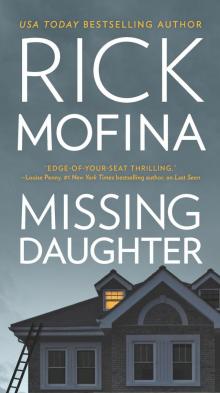 Missing Daughter
Missing Daughter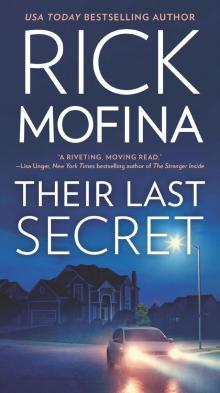 Their Last Secret
Their Last Secret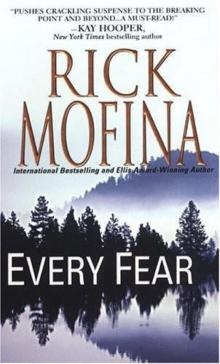 Jason Wade - 02 - Every Fear
Jason Wade - 02 - Every Fear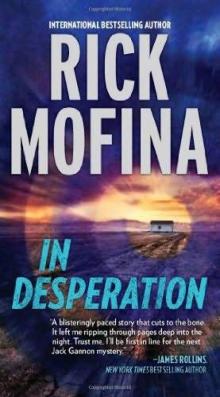 In Desperation
In Desperation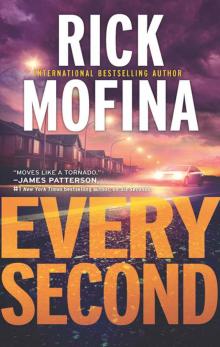 Every Second
Every Second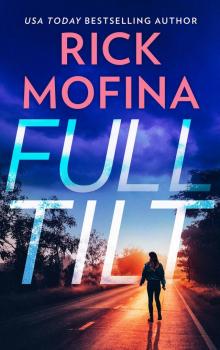 Full Tilt
Full Tilt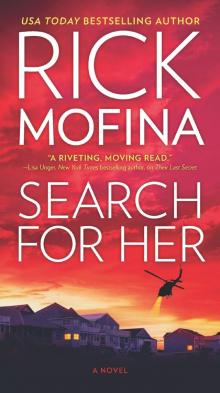 Search for Her
Search for Her The Last Pursuit
The Last Pursuit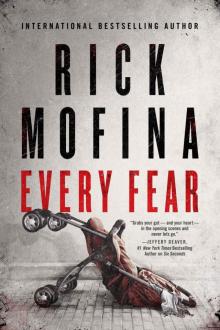 Every Fear
Every Fear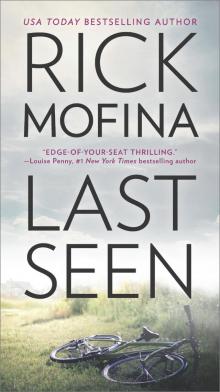 Last Seen
Last Seen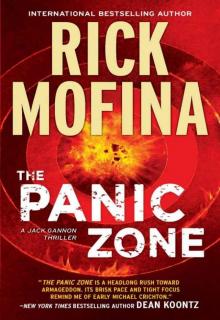 The Panic Zone
The Panic Zone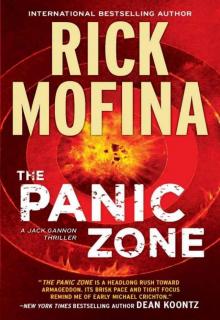 The Panic Zone jg-2
The Panic Zone jg-2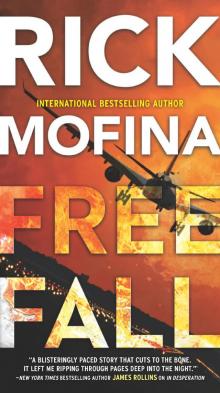 Free Fall
Free Fall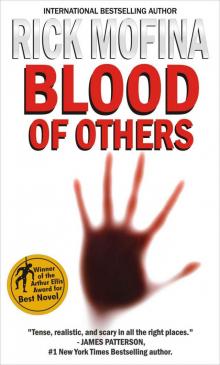 Blood of Others
Blood of Others![[Jason Wade 02.0] Every Fear Read online](http://i1.bookreadfree.com/i1/03/31/jason_wade_02_0_every_fear_preview.jpg) [Jason Wade 02.0] Every Fear
[Jason Wade 02.0] Every Fear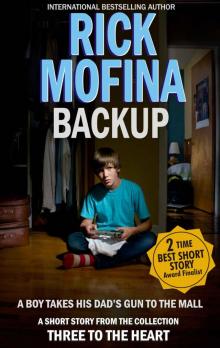 Backup
Backup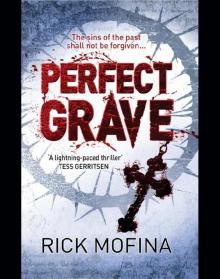 Perfect Grave
Perfect Grave Into the Dark
Into the Dark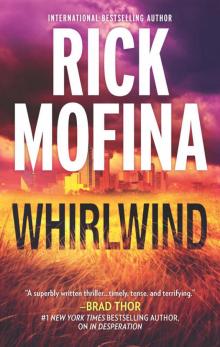 Whirlwind
Whirlwind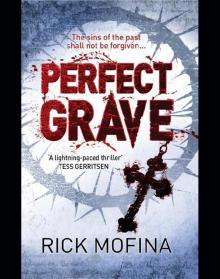 Perfect Grave jw-3
Perfect Grave jw-3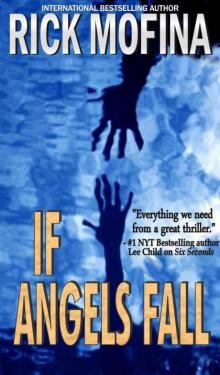 If Angels Fall (tom reed and walt sydowski)
If Angels Fall (tom reed and walt sydowski)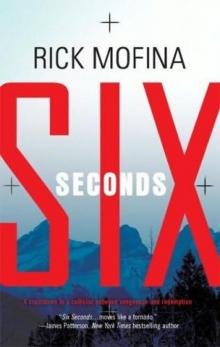 Six Seconds
Six Seconds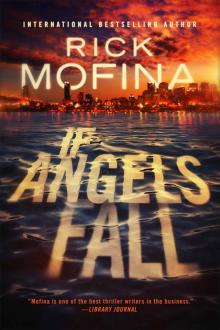 If Angels Fall
If Angels Fall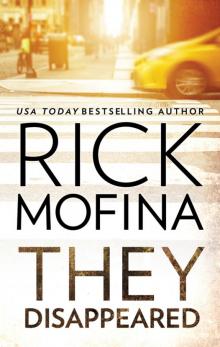 They Disappeared
They Disappeared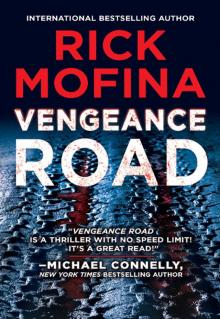 Vengeance Road
Vengeance Road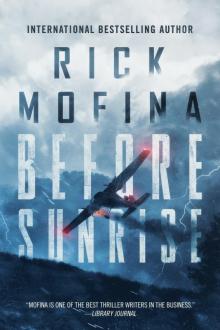 Before Sunrise
Before Sunrise A Lifetime Burning in a Moment
A Lifetime Burning in a Moment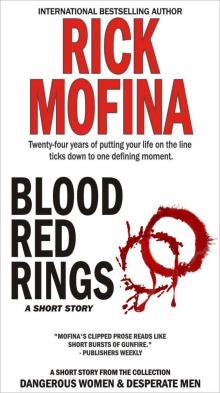 Blood Red Rings (Dangerous Women & Desperate Men)
Blood Red Rings (Dangerous Women & Desperate Men)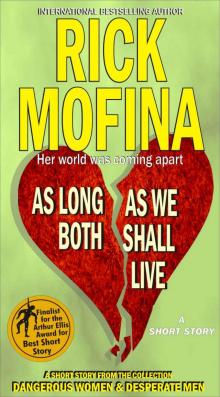 As Long As We Both Shall Live (Dangerous Women & Desperate Men)
As Long As We Both Shall Live (Dangerous Women & Desperate Men)![[Tom Reed and Walt Sydowski 01.0] If Angels Fall Read online](http://i1.bookreadfree.com/i2/04/12/tom_reed_and_walt_sydowski_01_0_if_angels_fall_preview.jpg) [Tom Reed and Walt Sydowski 01.0] If Angels Fall
[Tom Reed and Walt Sydowski 01.0] If Angels Fall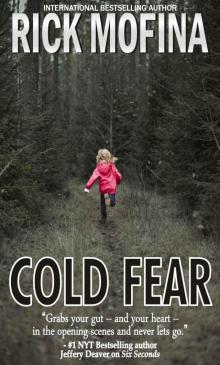 Cold Fear
Cold Fear Be Mine
Be Mine Three Bullets To Queensland
Three Bullets To Queensland